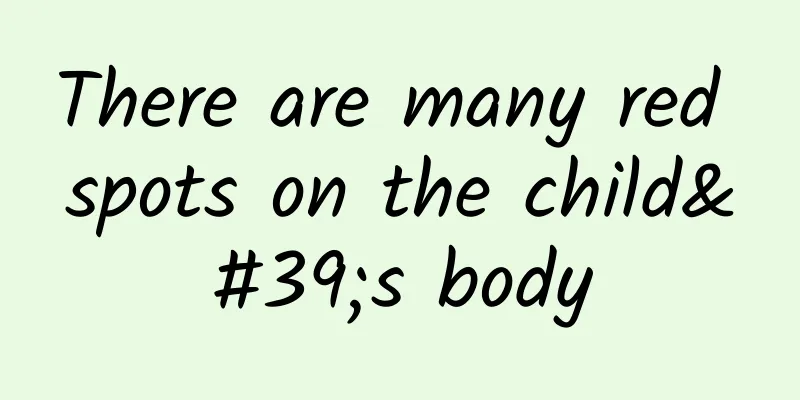Symptoms of narcolepsy

|
Narcolepsy is a chronic sleep disorder and a neurological disease whose cause is still unknown. This disease mainly begins in childhood or adolescence. The symptoms of narcolepsy are obvious, such as excessive daytime sleepiness and inability to control sleep. 1. Excessive daytime sleepiness The main manifestation is irresistible short-term sleep attacks during the day, which often occur 3-4 hours after waking up. Although the individual tries to stay awake during the attack, he cannot control himself and quickly falls asleep. Sleep usually lasts for several minutes and may occur multiple times a day. The attacks occur regardless of time, place or activity. Although sleep attacks often occur in a monotonous environment that would make a normal person fall asleep, they can also occur in dangerous situations (such as while driving, crossing the road, performing dangerous high-altitude operations, etc.). After waking up, they feel energetic and clear-headed, but become irritable and angry if they are prevented from falling asleep. Can wake up and fall asleep again suddenly within a few minutes. 2. Cataplexy It manifests as a sudden involuntary bowing of the head or sudden falling to the ground, but the patient remains conscious. It usually only lasts for a few seconds and usually only occurs once a day. Cataplexy is caused by a transient or complete loss of partial or total muscle tone. 3. Hypnagogic hallucinations It manifests as a vivid dream-like experience before falling asleep or waking up, with auditory hallucinations being the most common, but visual and tactile hallucinations may also be seen. 4. Sleep paralysis Sleep paralysis, also known as sleep paralysis, occurs in 15%-34% of patients with narcolepsy. Sleep paralysis is a terrifying experience in which narcolepsy patients cannot move their entire body or speak when they wake up from sleep, with only breathing and eye movements being unaffected. Sleep paralysis can last from seconds to minutes and often occurs simultaneously with hypnagogic and waking hallucinations, thus intensifying the sensory experience of fear. For most patients, the seizure can be stopped by calling or shaking others, but some patients cannot be awakened. Sleep paralysis is very similar to the movement inhibition associated with REM sleep and is also common in normal children and some otherwise normal adults. 5. Automatism About half of the patients have automatic symptoms. They experience simultaneous or rapid transitions between wakefulness and sleep while seemingly awake, such as inappropriate speech and behavior, aimless long-distance driving, and even shoplifting. These symptoms may last for a few seconds, an hour or longer, and they will completely forget what happened afterwards. 6. Insomnia Many patients suffer from insomnia, which may be caused by frequent hypnagogic hallucinations or sleep paralysis, resulting in intermittent sleep at night and inability to sleep through the night; it may also be because of excessive daytime sleepiness, which interferes with sleep at night. The total sleep hours of narcolepsy patients in a 24-hour day are no longer than those of normal people. 7. Others Memory loss, palpitations, general weakness, depression, anxiety, etc. |
<<: What to do if you have bloating? Relief of gas and bloating
>>: Phlebitis classification and nursing
Recommend
Is Restless Legs Syndrome Serious?
Restless legs syndrome is also called restless le...
Closed comedones all over the face
If your face is covered with closed comedones, it...
How to relieve insomnia before the college entrance examination
For senior high school students, the closer it ge...
Can malignant tumors be cured?
There are many diseases in life that are discover...
Is chronic pharyngitis contagious?
Chronic pharyngitis is a common disease, and it i...
What to do if you have tinnitus in your left ear
If you suddenly experience tinnitus in one ear, d...
How is rickets diagnosed?
The main cause of rickets is calcium deficiency, ...
To nourish the kidney, dehumidify and strengthen the spleen, you can choose these two
Nowadays, tonifying the kidney and removing dampn...
What diseases can biochemical tests detect?
In daily life, many people are required to underg...
Can Insomnia Be Cured?
The symptom of insomnia should not be unfamiliar ...
Will chickenpox definitely spread all over the body?
Chickenpox is a highly contagious disease that us...
What is arrhythmia? Beware that heart disease is the root cause
Arrhythmia refers to an abnormal heartbeat, and t...
What to do after formaldehyde poisoning
At present, there is a substance called formaldeh...
Purpose of bladder irrigation
The purpose of bladder irrigation is to eliminate...
Where is the bladder meridian located?
The bladder meridian is a relatively common merid...









